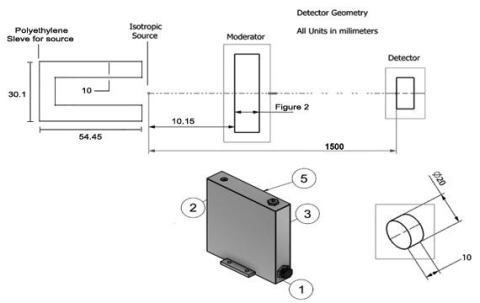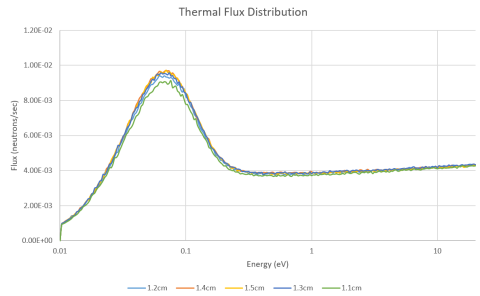This project will act as a laboratory experiment for the LINAC lab course in the absence of the linear accelerator while it undergoes various upgrades. This experiment will teach the concepts of neutron moderation, specifically fast neutrons, as well as time of flight measurements and thermal neutron detection. The three main components of this laboratory experiment setup are a D-T fusion source which emits 14.1 MeV neutrons surrounded by a polyethylene sleeve, light water enclosed in a heated aluminum casing acting as the moderator, and a lithium glass detector.
Team: Myles Gavilan, Victoria Makara, Gregory Siemers, Julia Witham, and Forrest (Yinjie) Zhao
Project Advisors: Dr. Ezekiel Blain

Members of the design group
Project Motivation
This project will act as a laboratory experiment for the LINAC lab course in the absence of the linear accelerator while it undergoes various upgrades. This experiment will teach the concepts of neutron moderation, specifically fast neutrons, as well as time of flight measurements and thermal neutron detection.

Proposed Experimental Configuration
Project Description
This project will act as a laboratory experiment for the LINAC lab course in the absence of the linear accelerator while it undergoes various upgrades. This experiment will teach the concepts of neutron moderation, specifically fast neutrons, as well as time of flight measurements and thermal neutron detection. The three main components of this laboratory experiment setup are a D-T fusion source which emits 14.1 MeV neutrons surrounded by a polyethylene sleeve, light water enclosed in a heated aluminum casing acting as the moderator, and a lithium glass detector.

Flux Distributions for Light Water Moderator (1e9 Neutrons Simulated)
Results and Accomplishments
Given an optimal geometry determined by the design team based on MCNP6.2 simulations and a detailed project cost analysis, the 14.1 MeV neutrons will be thermalized and subsequently captured by the detector. Once the neutrons are captured, a thermal spectrum will be generated for the students to analyze. Also utilizing MCNP6.2 simulations the team addressed the issues of gamma, and neutron shielding to ensure the safety of all the students, and the instructor in the classroom. The original final deliverables of this project were a finalized experimental setup, verified by lab trials, and a completed lab manual for the LINAC Laboratory course. However, due to COVID-19 this will no longer be achievable as the team is no longer able to confirm the experimental and shielding configurations. The team instead prepared an MCNP6.2 simulation assignment, and a completed theory and background for a laboratory manual.